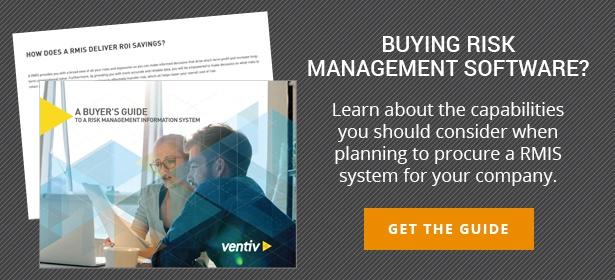There is no escaping the fact that the insurance renewal process is complex and involved. But have you ever wondered whether it also needs to be quite as time-consuming and labor intensive as it currently is?
Technology can play a crucial role in streamlining the insurance renewal process and reducing the risk of human error during data collection, providing that your current technology setup aligns with the needs of your insurance management team. If your system is not optimised to reflect the operational and organisational functions of your business, it may be time to reassess your arrangement.
So how do you know whether your organisational needs have outgrown your technology’s capabilities?
The renewal process is taking too much time
We know that the renewal process is involved, but there is a limit to how much time you should be spending on just collating and improving the data. A spreadsheet based system can take an insurance manager up to 2.5 months to complete. A lot of that time will be spent:
- Validating data
- Collating multiple spreadsheets
- Finding out where departments are in the renewal questionnaire process
- Chasing up those colleagues who have failed to to submit their questionnaires
- Ensuring that the data gathered is complete
However, the right platform, such as a Risk Management Information System (RMIS) will bypass a lot of these issues because:
- The information is stored in one central dashboard
- You can log on to find out where colleagues are up to on the questionnaire
- You can automate emails to send out reminders to get information handed in on time
- The system will flag numerical discrepancies so that you don’t have to spend time trawling through spreadsheets to find the mistake
Companies who can streamline this process can save significant time and money on their premiums, in fact some clients have saved up to 30% on premiums by having best in class data.
The data isn’t giving you the whole picture
Data has been described as the life-blood of risk management decisions, because the more granular it is, the better the narrative will be when you are presenting to the market. If your risk management system is a spreadsheet based system, then you won’t be getting the best, most complete data, because a spreadsheet system is:
- Prone to human error
- It is difficult to record and access data from the previous years
- It is awkward to read and analyse
The easiest way to combat these issues is to ensure that your technology has the capability:
- To capture and store all your data in one system
- Can flag potential anomalies in the data, so that you can review and preemptively fix it
- Empower you to analyse your data rather than leaving it wholly in the hands of your broker
- Can tell you what you still need to gather from the renewal questionnaire
Having a system with optimised data capabilities is important because the better quality your data, the better chance you have of improving your premiums.
Your renewal questionnaire is very difficult to navigate
Collating the questionnaire data is arguably the most involved part of the entire process. It might be difficult for you because you’re dealing with so many disparate groups of people and knowing:
- Where your colleagues are up to in the process,
- That the information they are providing is accurate,
can vastly improve your renewal outcomes. However, the other part of the equation is just as important, and that is understanding whether your technology is helping your colleagues to undertake the process in a clear and as easy as possible to . Ideally your technology should have the following capabilities:
- Have the appropriate workflow and reminders
- Pre-populate previous year’s values
- Create standard reports for underwriter submission
Like all good technology, the system should also be very intuitive to use, so that the user experience is a positive one. For example a good RMIS will be easy to access, by having the questionnaire in one place, rather than on multiple spreadsheets, give the respondent an indication of how much of the questionnaire that they have completed and also have multiple device capabilities so they can fill it in on the go.
If you make the process as pain-free as possible for respondents, then you can aim to improve your completion rate percentage, which can make a massive impact on your ultimate premiums.
A great RMIS can significantly impact the completion rate. For example, when The Uniting Church of Australia (UCA) overhauled their processes with RiskConsole a RMIS, their completion rate jumped from 30% to 90%. The higher completion rate was an important factor in their ability to ultimately save 30% on their their property premiums
Does your renewal technology need an overhaul?
Are the problems we mentioned uncomfortably familiar to you? If so, it’s high time you looked at implementing a new system that reflects the needs of your business, is tailored to obtain the relevant data and makes the whole undertaking so streamlined, you will wonder why it ever had to be stressful in the first place. Want more tips on how to streamline the insurance renewal process? Download our Zen guide today.
Jamie McDonnell is UK Territory Manager with Ventiv Technology, based in London. Email Jamie  at JAMIE.MCDONNELL@VENTIVTECH.COM. CONNECT WITH JAMIE ON LINKEDIN.
at JAMIE.MCDONNELL@VENTIVTECH.COM. CONNECT WITH JAMIE ON LINKEDIN.








 at
at 



